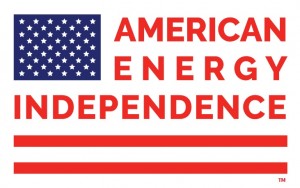Downside Risks for MLPs
The Shale Revolution is a powerful recent example of why America’s system of capitalism is so enduring. We’re not just leaders in shale oil and gas, the U.S. is pretty much the only game in town (see America Is Great!). One day it will probably be the basis for college courses across the country to illustrate the power of the free market. A year ago OPEC abandoned its efforts to bankrupt the U.S. shale industry through ruinously low crude oil prices (see OPEC Blinks). Although it wasn’t well recognized in many other parts of the world, our domestic energy industry was able to harness a long list of advantages:
1) The right geology
2) Existing network of energy infrastructure
3) A highly skilled labor force
4) An entrepreneurial culture
5) Water supplies in the right places
6) Technological excellence
7) Constant drive for productivity improvements
8) Privately owned mineral rights
9) Highly developed capital markets
It’s not the first time the U.S. has used its economic advantages to win a battle. As a result, we are on a path to greater energy security, improved geopolitical flexibility and American Energy Independence.
It’s a great story and recounting it to clients is never boring. But where can it go wrong?
Clients often ask, and it’s a fair question, not least because few investors have forgotten the 58.2% drop in the Alerian Index from August 2014-February 2016. The recent distribution cut at Plains All American (PAA) (see MLP Investors Learn About Logistics) remind that the occasional negative surprise remains possible across a landscape of generally rising cashflows and declining leverage.
The most obvious threat is a recession. Energy infrastructure is about moving, processing and storing volumes of hydrocarbons. If economic activity slows, energy consumption of all kinds slows too. Although many pipeline contracts are underwritten by volume commitments from shippers, overall cashflows for the sector would still suffer from less throughput. During the 2008 Financial Crisis MLPs fell along with everything.
Lower crude prices are an ever-present threat, very real after 2015. Oil affects investor sentiment far more than cashflows, as we often note. However, the industry is also much more invested in the growth of domestic hydrocarbon output than it was ten years ago. The sensitivity of domestic production to pricing broadly affects the utilization of existing and newly built capacity. Energy infrastructure is mostly about volumes, but those volumes are increasingly sensitive to prices. As the U.S. increases its role in export markets, domestic output will be impacted by global prices.
Slower growth and weaker hydrocarbon prices are the obvious threats. Geopolitical risks rarely receive consideration until they’re presenting an imminent threat, but we think about those too.
The Middle East remains an unstable place. The nuclear agreement with Iran is at some risk of being abrogated by the U.S., with unpredictable regional consequences. Substantial crude oil passes through the narrow Straits of Hormuz, between Iran and the United Arab Emirates. The recent vote by Iraqi Kurds for independence risks creating a backlash not just from Iraq’s central government but also from Turkey with its sizeable Kurdish population. Recently, Turkey suspended deliveries of oil from Iraqi Kurdistan passing through a pipeline on its territory.
A disruption of crude oil from the Middle East would drive up prices, and might even stimulate increased U.S. production if sustained. In any event, domestic output would be unlikely to fall.
North Korea represent another potential hotspot, with the very real possibility of the U.S. being involved in armed conflict. While we won’t make any investment forecasts based on a scenario of war on the Korean peninsula, we do note that the physical assets of energy infrastructure businesses are virtually 100% located in North America dispersed across the country. There’s minimal non-U.S. exposure, although swings in commodity prices could still impact significantly.
When considering what can go wrong outside America, investments in Energy Independence would seem to offer more protection than other sectors.
The tax reform proposals lack sufficient clarity to assess their impact. However, a lower U.S. corporate tax rate should boost after-tax profits at most corporations, In addition, allowing investors in pass-through vehicles (which should include MLPs) to pay tax on their passive earnings at the lower, corporate rate rather than at ordinary income tax rates should further boost their attractiveness (see MLPs and Tax Reform).
Former Defense Secretary Donald Rumsfeld’s famous “unknown unknowns” are what planners in many fields worry about. What we’ve highlighted above includes certain known “tail-risk” events (i.e. unlikely but impactful). We consider these regularly, and new ones as they appear on the horizon. Part of defense includes owning solid businesses and avoiding leverage, which is how we invest.